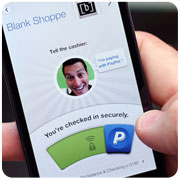
Brands may be shifting more money to digital advertising and social media marketing efforts, but so far that’s not buying them a lot of trust from consumers, according to a new report from Forrester Research.
Seventy percent of more than 57,000 U.S. consumers surveyed trust brand or product recommendations from family and friends, while digital ad formats such as social media posts, display ads, emails and text messages all rank below 20 percent. Professional online reviews (55 percent) and consumer-written online reviews (46 percent) also score higher than content provided by brands on their websites (32 percent) and sponsored search engine results (27 percent).
These trends are happening as top social networks Facebook and Twitter seek more ad dollars, but are trying to manage the process in an organic way that won’t chase off members.
Consumers may look to friend recommendations to help make purchasing decisions, but they do still recognize the value of online advertising.
“Some ads disarm consumers with humor and other techniques, or emotion, and are embraced or go viral,” Greg Sterling, principal analyst at Sterling Market Intelligence told the E-Commerce Times. “I think by the same token, consumers recognize that advertising pays for content. There’s some sophistication there about it.”
Can Branded Content Build Trust?
Those ads that go viral are often in the form of branded content, such as videos that use a brand as a backdrop but provide a form of entertainment. Other brands provide editorial content or other media that may or may not directly promote the brand.
Forrester’s report, “How To Build Your Brand With Branded Content,” uses Johnson & Johnson’s Baby Center, an editorial website with information for new moms, as an example. The site provides useful content and doesn’t always speak directly about Johnson & Johnson products.
“Consumers trust brand recommendations from friends, but they’ll also trust a brand to make its own recommendations if it’s done in a way that acknowledges their needs and respects their intelligence. Branded content can do both.” Tessa Wegert, digital media strategist with Enlighten, told the E-Commerce Times.
“There’s a gap between commerce and traditional forms of entertainment like storytelling,” Wegert said. “Companies that can effectively bridge it using branded content can attract positive attention from their target audience, and that attention is ultimately absorbed by the brand itself.”
What Would Friends Buy?
Friend recommendations are a more organic way of reaching consumers. It is up to a consumer to like a brand or product, or post that they are enjoying a new product they’ve bought.
It also falls into the category of what Forrester Research analyst Tracy Stokes, the report’s author, calls “pull” content. A consumer has to seek out a recommendation, product review or other online content. Banner ads, on the other hand, are considered “push” content, where the ad is pushed to the consumer on a site or page they’re visiting.
Brands can tailor their messaging to reach consumers, but Stokes warns that companies looking to tap into the recommendation game, or run sponsored posts on social networking sites, should do so in a genuine way.
An Integrated Ad Strategy
Social recommendations and branded content are key components of online advertising. While the two channels score higher in trust, however, they work best when they fit into a larger strategy.
“What (advertisers) may want to do is just be more selective in the ads that they use in the context of a diversified campaign,” said Sterling. “Rather than throw a bunch of ads up there, which may be unseen or untrusted, marketers may want to be more selective about the places they put paid media, and put that in the context of a broader initiative.”






















































Social Media
See all Social Media